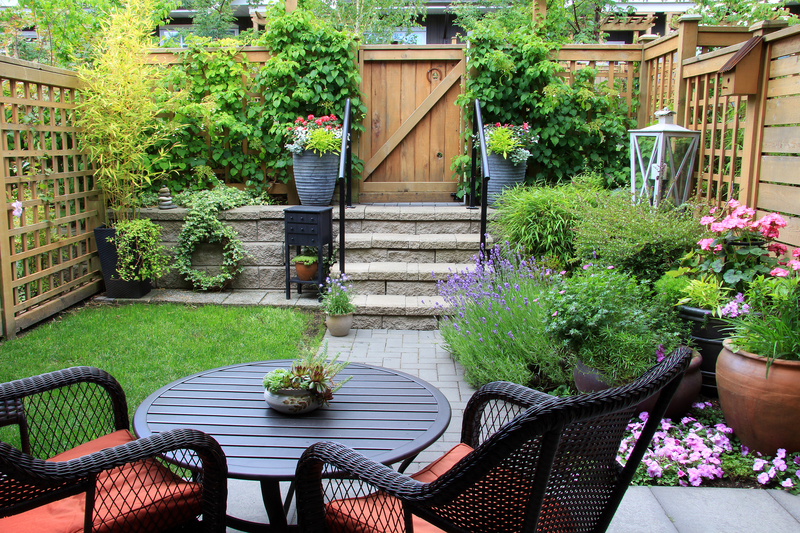Gardening: The Unsung Hero in the Battle Against Climate Change
Posted on 07/09/2025
Gardening: The Unsung Hero in the Battle Against Climate Change
Introduction: The Unexpected Power of Gardening for Combating Climate Change
Gardening often brings to mind lush flower beds, fresh vegetables, and tranquil moments connecting with nature. Yet, what many people do not realize is that gardening is a potent ally in the fight against climate change. As the world grapples with rising temperatures, melting ice caps, and erratic weather patterns, the humble act of tending to plants has emerged as one of the most accessible, impactful, and satisfying ways for individuals and communities to make a difference.
This article explores how gardening--in its many forms--plays a crucial, if underappreciated, role in mitigating the effects of climate change. From absorbing carbon dioxide to supporting biodiversity, from reducing urban heat to fostering sustainable food systems, gardening offers practical solutions and hope for the future.

How Gardens Help Fight Climate Change
Climate change is driven by excess greenhouse gases, habitat destruction, and unsustainable land use practices. Gardening combats these trends through a variety of mechanisms:
1. Carbon Sequestration: Plants as Carbon Sinks
One of the main causes of global warming is the buildup of carbon dioxide (CO2) in the atmosphere. Plants naturally absorb CO2 during photosynthesis, storing carbon in their tissues and the soil. A well-maintained garden--especially one rich in perennial plants, shrubs, and trees--acts as a miniature carbon sink.
- Trees and shrubs sequester significant amounts of carbon over their lifetime.
- Composting organic waste and adding it to garden soil increases its carbon content, creating healthier, more resilient ecosystems.
- Cover crops and deep-rooted plants help lock carbon in the ground, preventing its release into the atmosphere.
Even small urban gardens can make a measurable difference when multiplied across a city or country.
2. Cooling the Urban Heat Island Effect
Cities often experience temperatures several degrees higher than surrounding countryside--a phenomenon known as the urban heat island effect. This occurs as buildings, concrete, and asphalt absorb and re-radiate heat. Garden spaces counteract this problem by:
- Shading surfaces and reducing direct sunlight absorption.
- Releasing moisture through plant transpiration, which cools the surrounding air.
- Reflecting less heat compared to hard surfaces.
Community gardens, rooftop gardens, and green walls are especially powerful tools for urban cooling. By integrating more green space into our cities, we make them more livable, while also reducing energy demand for air conditioning and thus cutting greenhouse gas emissions.
3. Enhancing Biodiversity and Ecosystem Health
Climate change and biodiversity loss go hand-in-hand. Gardening supports a wide array of wildlife--from pollinators to beneficial insects, birds, and small mammals--especially when gardeners choose native plants and avoid artificial chemicals.
- Native gardens support species adapted to local climates and conditions, enhancing ecosystem resilience.
- Pesticide-free gardening improves soil health and allows natural pest control to flourish.
- A diversity of plants supports a diversity of wildlife, creating robust food webs.
By restoring and connecting green spaces, even on a small scale, home and community gardens become vital refuges for threatened species and serve as corridors for wildlife to move and adapt to changing climates.
4. Reducing Food Miles and Promoting Sustainable Diets
The global food system contributes significantly to climate change, accounting for up to one-third of greenhouse gas emissions. By growing food locally in home or community gardens, we can cut down on:
- The fossil fuels used to produce, package, transport, and refrigerate food over long distances.
- Emissions from food waste, since gardeners can harvest only what they need and compost the rest.
- The use of synthetic fertilizers and pesticides, which are major sources of nitrous oxide and methane emissions.
Urban agriculture and edible landscaping promote fresh diets with a lower carbon footprint. If embraced widely, gardening as a means of food production could significantly aid in stabilizing the climate while promoting health and community ties.
5. Water Conservation and Management
Climate change disrupts rainfall patterns and increases the likelihood of both droughts and floods. Thoughtful gardening techniques help manage water resources wisely, building resilience to climate extremes.
- Diverse plantings and healthy soils act as sponges, absorbing excess rain and reducing runoff.
- Rain gardens capture stormwater, helping to prevent urban flooding and recharge local aquifers.
- Mulching and selecting drought-tolerant plants conserve water during dry spells.
Gardening for water-wise landscapes not only saves precious resources but also creates beautiful, thriving spaces that weather climate variability.
The Many Forms of Climate-Friendly Gardening
As you embark on climate change gardening, remember it can take many shapes and sizes, each with its unique contributions:
Permaculture Gardens
Permaculture design mimics natural systems, seeking to create landscapes that are both productive and regenerative. Permaculture gardens prioritize perennial plants, companion planting, organic matter recycling, and minimal disturbance--resulting in robust carbon sinks and resilient microclimates.
Native Plant and Pollinator Gardens
Gardens dedicated to native flora support local biodiversity and require less watering and chemical input. Pollinator-friendly gardens provide nectar and shelter for bees, butterflies, and birds, who in turn enable food production and ecosystem health.
Community Gardens
Community gardening not only grows food and beauty near where people live, but also scales up carbon sequestration, water management, and habitat creation, especially in densely populated areas. They also foster environmental awareness and social ties, both of which are essential in creating climate-ready communities.
Regenerative and Organic Gardening
Regenerative gardening goes a step further than sustainability by seeking to restore damaged ecosystems. This involves tactics such as no-dig gardening, composting, cover cropping, and minimal chemical use--all of which build soil health and help combat climate change through carbon storage and resilience.
Simple Steps to Make Your Garden a Climate Change Hero
Whether you have a balcony planter, a backyard plot, or a patch in a community garden, everyone can garden with a climate-conscious mindset. Here's how to get started:
- Plant more trees and perennials: They store more carbon over their lifetimes than annuals.
- Enrich the soil: Add compost and mulch to build up organic matter and trap carbon.
- Choose native and drought-tolerant species: Reduce your need for water and chemical inputs while supporting local wildlife.
- Practice organic, no-dig gardening: Disturbing the soil as little as possible keeps carbon locked underground and supports soil life.
- Water wisely: Use rain barrels, mulch, and proper plant choices to minimize consumption.
- Compost food and yard waste: Keeps organic matter out of landfills (where it releases methane) and returns nutrients to the soil.
- Support biodiversity: Plant a variety of species, include flowering plants for pollinators, and provide shelter for wildlife.
- Grow some of your own food: Every tomato or salad leaf grown at home means less fossil fuel used for shipping and refrigerating groceries.
- Avoid synthetic fertilizers and pesticides: These not only require fossil fuels to produce, but also harm beneficial organisms and contribute to emissions.
Success Stories: Real-Life Examples of Gardens Making a Climate Difference
- New York City's Rooftop Gardens: Across Manhattan and Brooklyn, hundreds of green roofs are turning concrete expanses into lush gardens. These gardens not only cool the buildings below, reducing energy use, but also capture stormwater and provide habitats for pollinators and birds.
- England's Pollinator Pathways: Communities in the UK are planting long corridors of wildflowers across cities and farmland, helping bees and butterflies adapt to changing climates and strengthening the ecosystem services that keep agriculture resilient.
- Regenerative Farms in the Midwest USA: Small organic farms practicing regenerative techniques are restoring prairies, boosting biodiversity, and sequestering vast amounts of carbon, demonstrating that food production and climate action go hand-in-hand.
- Suburban Backyards Worldwide: Homeowners are swapping lawns for edible gardens, rain gardens, and pollinator-friendly plantings, transforming water-hungry grass into vital climate buffers.
Gardening for Climate Resilience: Building a Better Future
Gardening empowers individuals and communities to take meaningful action against climate change--not just by reducing emissions, but by creating landscapes that can adapt to and buffer against its effects. Healthy gardens:
- Reduce the risk of flooding and drought through smart water management.
- Support healthy, local food systems that are less vulnerable to supply chain disruptions.
- Foster community spirit and mental health, which are crucial in responding to climate challenges.
- Serve as educational spaces for children and adults to learn about nature, food, and sustainability.
By making gardens central to urban planning, education, and climate policy, we can create greener, cooler, and more resilient spaces for all.

Overcoming Obstacles: Myths and Challenges in Climate Change Gardening
Despite its many benefits, climate-friendly gardening faces hurdles:
- Access to land and resources can be limited in urban areas. Innovations like container gardening, vertical gardens, and rooftop gardens help overcome space constraints.
- Lack of knowledge or guidance. Community workshops, online resources, and demonstration gardens are making it easier for everyone to start gardening for the climate.
- Misconceptions about aesthetics. Naturalistic gardens can be just as beautiful--if not more so--than traditional lawns or clipped hedges.
With creativity, policy support, and community engagement, these challenges can be overcome, unlocking gardening's full potential as a climate solution.
Conclusion: The Time is Ripe for Gardening as Climate Action
Gardening, in all its forms, has always been about nurturing life--both for ourselves and for the planet. As the environmental stakes grow higher, its role as an unsung hero in the battle against climate change can no longer be overlooked. Whether you are growing a few herbs on a windowsill or transforming your entire neighborhood with a community garden, your actions are part of a global movement to create a sustainable, resilient future.
So pick up a trowel, plant a seed, and join the climate gardening revolution--because every garden is a step toward a healthier planet.
Key Takeaways: Gardening for Climate Change
- Gardening reduces greenhouse gases, cools cities, and supports biodiversity.
- Anyone can contribute--no matter the size of the garden!
- Climate-friendly gardening builds resilient, sustainable communities.
- Now is the time to recognize and unleash the power of gardens as tools for meaningful climate action.

